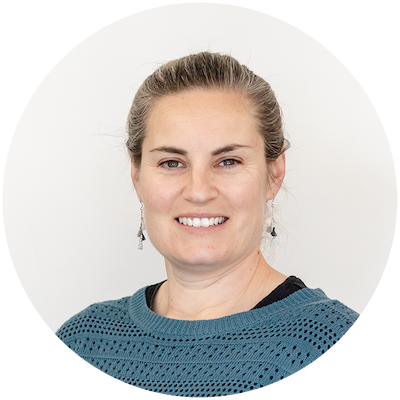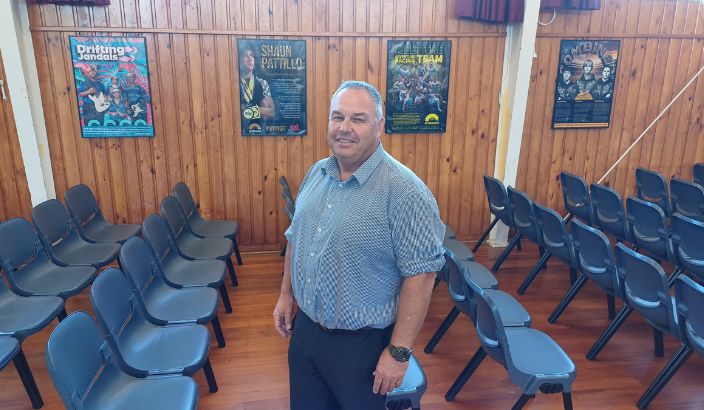Layered solutions to a complex problem


Motueka High School has created posters to celebrate student achievers across a range of settings while emphasising their high attendance. This is one of the school’s tools in its push to tackle truancy, says principal John Prestige. Photo: Elise Vollweiler.
In April 2024, the government set an attendance target for schools, with the aim of 80 per cent of children to be attending 90 per cent of the time. This week, Elise Vollweiler talks to Motueka High School, delving into the solutions that they are trialling with each “tier” of attendance problems.
More carrot and less stick is Motueka High School’s approach to the issue of attendance.
The government’s attendance targets equate to students missing no more than four days of school per term to qualify as “regular” attendees. Between 80 and 90 per cent – missing just under a day a week, on average - is categorised as irregular attendance, while 70 to 80 per cent is moderate. The lowest tier, chronic absence, is the equivalent of 15 days off per term.
Principal John Prestige says that attendance has long been an issue for schools, and at Motueka High School, individual students’ attendance used to be linked to the privileges they received.
“We used to have a really hard and fast rule of traffic lights. Ninety per cent – in green – okay, you can go on that sports trip… you can go to the ball. You know, all of these additional things that weren’t necessarily curriculum-based.”
He says that when students’ attendance dropped under 90 per cent, they were in orange, and needed to be talking nicely to their dean, making plans to catch up and begin to show improvement. Below 80 per cent was a red light – “too bad, not this time”.
However, that system fell away with the disruption of Covid, because “we didn’t want to create a pressure where students felt like they had to come to school even if they were sick, just to make sure they could go to the school ball”.
In 2025 and with new imperatives from the government, the school is working to individualise its approach to truancy.
“We are working in tiers… because you do need to have different interventions for each group.”
When attendance starts to dip below 90 per cent, parents are alerted, and some students just need to be pulled aside for a quiet chat – a little bit of support or pressure, John says – to get them back on track.
There are occasions where extra-curricular opportunities need to come second to being in the classroom. For example, the school used to send their entire Year 12 to Ryda, a driver education programme. John says it is now optional, because “the pressure is on students to be in class”.
When students have been absent for a few classes, particularly in sequential subjects such as maths, they can quickly feel left behind.
The school made its case to the Ministry of Education and was awarded $15,000 towards a teacher aide role to work with these children one-on-one, to fill the gaps and help them reconnect and reintegrate after patchy attendance.
Last year they also trialled creating 15 high-quality posters, showcasing students with high attendance. The focus wasn’t necessarily on academic achievement, John emphasises. As well as scholarship winners, the posters celebrate sportspeople, firefighting volunteers, musicians and general good sorts. They were showcased over the summer at corresponding businesses around Motueka – the highly successful adventure racing team poster was displayed at My Ride, and Brazilian jujitsu champion Shaun Pattillo was showcased at Motueka’s recreation centre.
Figures from Term 4 2024 show that Motueka High School’s “regular attendance” rates sit at about 50 per cent, which is about in line with the national average.
John says that the school shares some of the same barriers to attendance as other parts of the country and also faces some unique challenges.
In the more severe tiers of attendance, there is a likelihood that households have “more significant drivers and barriers” to overcome, John says.
These include a lack of access to physical and mental health support within an overloaded system, or transport issues in getting to school, in an area where housing is scarce, and families may be located a distance from the school.
Also, John says, with the cost of living, “just about everyone in the family unit is working at least part time”.
This means that parents may not be in the household in the early morning to help their teens out the door, or indeed high school students may be in charge of getting their younger siblings where they need to be.
“Until you can support the students and families with those, then actually you’re not going to have much of an impact on attendance.”
Motueka’s distance from the facilities in Nelson is also an issue.
If students have a hospital or dental appointment, for example, the travel time will mean that their absence is counted as an M, or an absence, rather than a D, which is a short appointment.
“If you’re a student of Motueka, Golden Bay, Collingwood, Murchison, and you have to go to the orthodontist, that’s going to be the whole day,” John says.
“You extrapolate that out by 750 students, and how many kids are going to orthodontists? That’s going to have an impact on what our stats look like, compared to what this exact same profile at Nelson College, Nelson College for Girls and Nayland would look like.”
